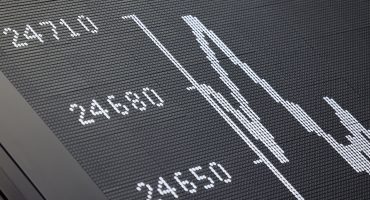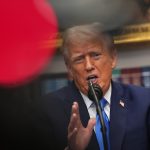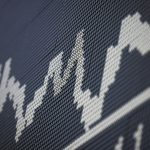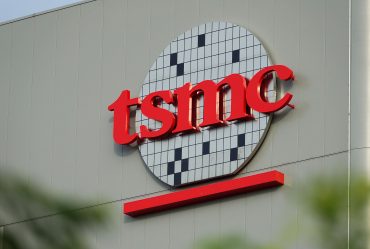
- DAX
- European Markets
- FTSE 100
European Tech Markets Steady Amid U.S.–China Trade Clash
5 minute read

European Tech Markets Demonstrate Resilience as U.S.-China Rare Earth Dispute Prompts Companies to Diversify Supply Chains
Key Takeaways
- European Markets Rise Despite Trade Tensions: Germany’s DAX is forecasted to gain 0.3%, Italy’s FTSE MIB up 0.54%, and France’s CAC 40 up 0.26%, signaling investor confidence in the region’s stability amid U.S.-China tariff escalations. The U.K.’s FTSE 100 hovers near flat, reflecting measured optimism.
- China Controls ~70% of Rare Earth Minerals: President Trump has threatened 100% additional tariffs on Chinese imports in retaliation for Beijing’s tightened export controls on these critical materials, vital for semiconductors, defense tech, and electric vehicles.
- German Enterprise Software Market Hits $13.57 Billion: Cloud-based solutions dominate with over 64% market share in distribution, underscoring Europe’s tech self-sufficiency as firms pivot from global disruptions.
Introduction
European stocks are gearing up for a buoyant open on October 13, 2025, as traders deftly sidestep the intensifying U.S.-China trade skirmish. The continent’s indices are flashing signs of hardened resilience, with gains projected across major benchmarks even as President Donald Trump ramps up tariff rhetoric against Beijing’s restrictions on rare earth exports—materials underpinning everything from smartphone chips to fighter jets.
Leading the pack, Germany’s DAX eyes a 0.3% uptick, Italy’s FTSE MIB a robust 0.54% climb, and France’s CAC 40 a steady 0.26% rise, per IG futures data. The U.K.’s FTSE 100, meanwhile, trades marginally below flat, capturing a broader sentiment of cautious buoyancy on European floors. This contrasts sharply with overnight slides in Asia-Pacific markets, where the Hang Seng China Enterprises Index shed up to 3.6% amid fears of supply chain ripple effects.
Key Developments
The trading week kicks off in the shadow of Trump’s Friday announcement, where he vowed to slap an extra 100% tariff on all Chinese imports starting November 1—or sooner—directly countering Beijing’s “Announcement No. 61 of 2025,” which imposes the strictest-ever export curbs on rare earths and permanent magnets. China, which dominates ~70% of global rare earth mining and over 90% of processing, views these materials as a strategic lever in high-tech sectors like automotive EVs and defense systems.
In a pivot on Sunday, Trump dialed back the heat via Truth Social, posting: “Don’t worry about China—trade relations will all be fine,” a nod to potential de-escalation ahead of possible Trump-Xi talks. Beijing’s Ministry of Commerce fired back swiftly, branding the U.S. move a “textbook double standard” and affirming it is “not afraid of any trade conflict,” while hinting at countermeasures like further export squeezes.
Last week’s European close was indeed lower, with the Stoxx 600 dipping 1.5% on Friday alone, erasing prior gains as tariff jitters peaked—yet this pales against Asia’s sharper overnight drops, including a 1.7% plunge in Hong Kong’s Hang Seng.
Market Impact
U.S. futures staged a Sunday rebound, with Nasdaq-100 contracts surging 1.7% and S&P 500 futures up 1.2%, fueled by Trump’s softer tone and easing crypto volatility. Tech heavyweights felt the initial sting: Apple shares tumbled over 3% to $245 on October 10, hammered by its heavy reliance on Chinese assembly for iPhones and components laced with rare earths.
Asia-Pacific exchanges absorbed the heaviest blows, with Singapore’s STI down 1% and broader indices sliding on supply fears. In response, European tech firms are accelerating diversification: Semiconductor giants like ASML are scouting Vietnam and Mexico for rare earth alternatives, while logistics tweaks include surcharges up to 15% on China-sourced shipments. “We’re not waiting for the next shoe to drop—reshoring magnets and magnets precursors is now table stakes,” noted a supply chain exec at Infineon Technologies.
The German enterprise software market stands as a beacon of this fortitude, clocking $13.57 billion in projected 2025 revenue, with cloud solutions powering over 64% of distribution amid a broader €56.52 billion cloud computing boom. This shift not only buffers against tariffs but aligns with EU mandates like the Critical Raw Materials Act, aiming for 10% domestic extraction by 2030.
Strategic Insights
Europe’s tech ecosystem is evolving beyond mere survival, leveraging the Digital Services Act (DSA) and AI Act to carve out a regulatory moat against Silicon Valley’s sprawl. “The EU’s framework isn’t a hurdle—it’s a high ground,” says Dr. Lena Müller, AI policy lead at the European Commission. Operating costs 20-30% below U.S. levels, coupled with a talent pool of 5 million STEM grads annually, make the region a magnet for venture capital—€45 billion poured into deeptech last year alone.
This buffers against U.S.-China volatility: While Beijing’s curbs could hike global rare earth prices 25-40%, European firms like SAP and Siemens are scaling AI-driven supply forecasting with lean teams, enabling 2x faster global rollout. Investments in cloud infra (€128 billion projected by 2032) and quantum-resistant encryption further cement independence.
Expert Opinions and Data
Analysts hail Europe’s poise as proof of “structural decoupling,” with JPMorgan’s Barry Bannister noting: “The continent’s 15% lower beta to U.S.-China shocks underscores a maturing economy less tethered to Beijing’s whims.” Investor eyes now pivot to Q3 earnings from bellwethers like ASML (up 12% YTD on lithography demand) and LVMH kicking off this week.
Layered atop this is the IMF-World Bank Annual Meetings (October 13-18 in Washington), where policymakers will dissect trade fractures—expect debates on a “Rare Earths Resilience Fund” to rival China’s dominance. Semiconductor players, per Deloitte, plan 10-15% pricing hikes to cushion tariffs, while positioning Europe as the “stable neutral zone” for global ops.
Conclusion
As European markets dawn with guarded positivity on October 13, the narrative shifts from vulnerability to vanguard: a tech sector thriving via adaptive regs, bold investments, and human capital. Amid U.S.-China crossfire, the EU’s AI stewardship and GDPR rigor aren’t just defenses—they’re differentiators, luring $200 billion in FDI by decade’s end. In an era of fractured globals, Europe’s quiet strength whispers a louder truth: diversification isn’t reactive; it’s the new normal.
Looking ahead to 2030, Europe’s tech landscape is poised for exponential growth, with projections estimating a 15-20% annual compound increase in AI and deeptech sectors, driven by strategic US-EU partnerships aimed at countering Chinese dominance. As dual tech stacks solidify between Washington and Beijing, the EU’s pursuit of an independent policy framework—bolstered by initiatives like the Critical Raw Materials Act and cross-Atlantic collaborations—positions it not merely as a bystander, but as a pivotal architect of a multipolar digital order, fostering innovation that spans semiconductors to sustainable energy while mitigating tariff-induced shocks.








